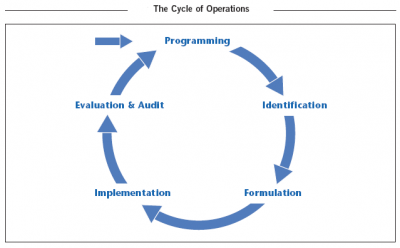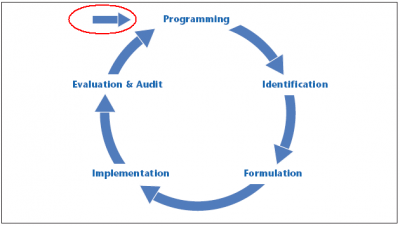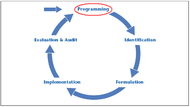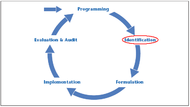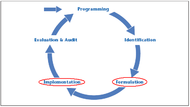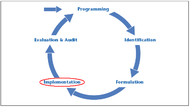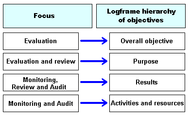This article is part of a set of background articles providing an ‘outline of knowledge’ of international statistical cooperation between the European Union (EU) and developing countries, for non-statisticians needing to deal with statistics in development programmes and projects. The outline serves as an entry point and introduction to the much more detailed Eurostat publication 'Guide to statistics in European Commission development cooperation', downloadable in PDF format in English, French and Spanish (further down referred to as 'the Guide').
Many developing countries have weak statistical systems and mechanisms for measuring results. Good, reliable statistics are essential for measuring progress in reaching development goals and provide essential information about the effectiveness of policies and programmes. They help governments improve their policies and to be transparent and accountable about the delivery of development results. Reliable statistics are a key element towards better measurement, monitoring and management of the results of development assistance.
Statistics are instrumental in achieving policy goals. The availability of good quality statistics is a pre-condition for proper strategic analysis and for programming and design of concrete interventions. The analysis should address the state of the statistics system, its strengths and weaknesses and remedial and quality improving actions required. Actions in support of statistics should be provided within the frame of the National Strategy for the Development of Statistics, which should be compatible with national development plans or poverty reduction strategies.
Statistics do matter - statistics, indicators and the European Commission project cycle
| Indicators and statistics are of key importance to focus EU assistance better. |
Eurostat's Guide:
- If you think that statistics are important but bread is more urgent, please ask yourself on what information you base your answers to these questions: 'How much bread?' and 'Where is the bread needed?'
The European Consensus for Development:
- “15. The EU and developing countries share responsibility and accountability for their joint efforts in partnership. The EU will support partner countries' poverty reduction, development and reform strategies, which focus on the MDGs, and will align with partner countries' systems and procedures. Progress indicators and regular evaluation of assistance are of key importance to better focus EU assistance.”
What is an indicator?
EuropeAid: Policy steering - The role and use of performance measurement indicators:
- “An indicator is a (generally statistical, but also potentially logical) order of magnitude linked naturally or arbitrarily to the measurement of policy activities (in the broadest sense of governance). Indicators are characterised primarily by the fact that they provide information in summary form, are communicable and are subject to relative consensus.
- ...
- An indicator is generally defined by its function (what it measures), the means of obtaining it (formula and necessary data), its quality (the extent to which it can be interpreted and monitored over time) and the limits on its use (what it does not measure or measures poorly).”
Typology of indicators according to what the indicator is measuring:
| Input indicators | Output indicators | Outcome indicators | Impact indicators |
| They measure the financial resources provided and the administrative and regulatory measures taken | They measure the immediate and concrete consequences of the resources used and measures taken | They measure the results at the level of beneficiaries | They measure the consequences of the outcomes in terms of wider objectives |
| Their definition can be treated as very broad, covering in some cases what are often called "process indicators" | Their definition covers those goods and services "produced" or "provided" by the public sector with the inputs | Their definition covers the outcomes (or results) from the use and satisfaction of the goods and services produced by the public sector - it is where supply comes face-to-face with demand | Their definition covers the wider effects of the outcomes but might be also higher level impacts, related to broader objectives |
| Examples: Share of the budget devoted to education expenditure, abolition of compulsory school uniforms | Examples: Number of schools built, number of teachers trained | Examples: school enrolment, percentage of girls among the children entering in first year of primary school | Examples: Literacy rates, unemployment rates |
Typology of indicators by the use made of them
Indicators can also be classified by the use that is made of them in the European Commission programme cycle.
| Group A indicators | Group B indicators | Group C indicators |
| They monitor overall progress at country or regional level | They monitor overall progress at sector level | They monitor aid effectiveness |
| They are used to describe events at country or regional level. They are useful for policy making. They depict the context of a sector or to measure its changes over time. | They monitor what is happening at programme/ project level.They are useful to evaluate programmes/ projects. They can usually be found in a logical framework for a programme/ project and in budget support programmes. For programmes/ projects they will often be sector specific and may be tailored to the individual action. | They are used for reporting and accountability of countries and donors with respect to their commitments. In principle, the MDG indicators could be seen as part of this group but in practice they cannot be used to hold countries or donors accountable. |
Guide examples and practical information
- B.3.2 Typology of development indicators
Statistics before the start of the cycle of operations
The allocation of funds made available by the European Commission is based on a number of indicators.
This principle is set up in the legal instruments that constitute the basis for the cooperation between the European Commission and its partner countries.
Both the Cotonou Agreement and the Development Cooperation Instrument make explicit reference to the calculation of the multi-annual indicative allocations based on need and performance criteria.
The European Consensus for Development also states a European Commission commitment to decide on the resources allocated to each country based on objective and transparent criteria.
| |
| |
| |
|
Guide examples and practical information
- B.3.3 Indicators and statistics in the European Commission development cycle
- Box 3.3: The ‘Agenda for Change’ and country resource allocation
- Box 3.4: The Cotonou Agreement and Country Resource Allocation
- Box 3.5: The Development Cooperation Instrument (DCI) Regulation and country resource allocation
- Box 3.6: The European Consensus on Development and country resource allocation
Statistics and the co-operation project cycle
| Statistics and the programming phase | Statistics and the identification phase | Statistics and the formulation phase; Statistics and the implementation phase | Statistics and the evaluation and audit phase |
| Why? A clear picture of the situation faced by the country in key development issues is crucial when setting up the cooperation strategy. Only with such information is it possible to identify sectors and areas where European Commission support is needed or of particular added value. | Why? The use of indicators is crucial for the success of a project or programme identification. Compared to the set of indicators used during programming, these indicators present a closer definition of the particularities of a sector. | Why? The indicators used to identify a project or programme will usually be useful for the formulation phase. However, given the greater knowledge at this stage, new indicators are often added as new needs for information on specific issues are defined. In principle, the indicator set that fulfils the information need for effective project formulation should be the same that will be used for monitoring project implementation. | Why? For the purpose of answering questions, the evaluation team collects data that are already available (secondary data) and applies data collection tools with a view to obtaining new information (primary data) |
| What? A set of general and sector indicators is required. These should be collected at an early stage of the programming process and be used as baseline for measuring progress in terms of poverty reduction and social development. They should also be considered in the mid-term evaluation. | What? The indicators provide measurements of the situation in the sector where the intervention is to be designed. The main aim will be to identify what are the needs, the strengths and weaknesses in the sector and facilitate the choice of activities and targets. | What? These indicators will constitute a project's logical framework. | What? Four sets of indicators correspond to four specific stages of the evaluation process:
An indicator can belong to several of these indicator sets; for example, a socio-economic indicator may also be appropriate as a programme impact indicator. |
| How? Indicators should be drawn from the partner country's national or sector development policy. National data should be used when they are of sufficient quality. The Guide Box 3.7 provides a comparison of sets of key indicators by development agency | How? The Guide Part D "Statistics for policy issues" provides examples of indicators used for the identification phase of programmes / projects in various sectors: | How? The Guide Part D "Statistics for policy issues" provides examples of indicators used for the formulation and/or implementation phase of programmes/projects in various sectors: | How? The Guide Part D "Statistics for policy issues" provides examples of indicators used for the evaluation and audit phase of programmes/projects in various sectors: |
Explore further
Other articles
- International statistical cooperation (online publication)
- Statistics in development cooperation (online publication to which this article belongs)
Thematic section
External links
- EuropeAid:
- Budget support
- Policy Steering: The Role and Use of Performance Measurement Indicators
- Project Cycle Management Guidelines (currently under revision, please consult EuropeAid’s website for the most recent information)
- OECD: Development Assistance Committee's typology
- United Nations Statistics Division: Millennium Development Goals Indicators
- World Bank:
Legislation
- Communication from the Commission - Increasing the impact of EU Development Policy: an Agenda for Change
- Cotonou Agreement
- Joint statement by the Council and the representatives of the governments of the Member States meeting within the Council, the European Parliament and the Commission on European Union Development Policy: The European Consensus
- Regulation (EC) No 1905/2006 establishing a financing instrument for development cooperation

